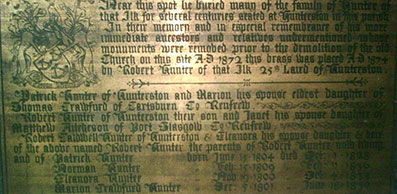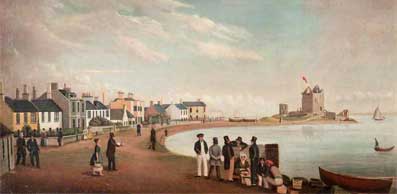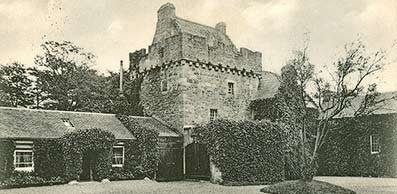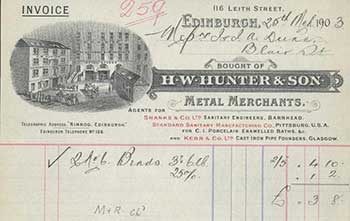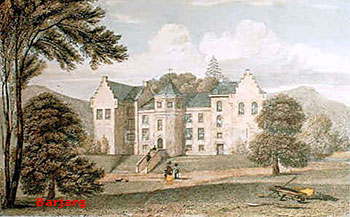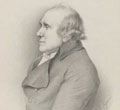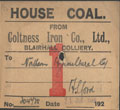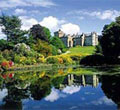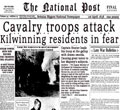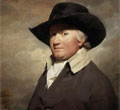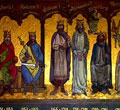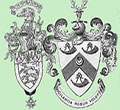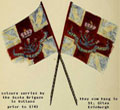History of Hunter
part one
The surname of Venator or Huntar is of early Norman origin. The use of fixed surnames arose in France about the year 1000, came into England about sixty years later with the Norman Conquest, and reached us in Scotland, speaking roundly, about the year 1100.
In 1116, we find in our Cartularies the name of William Venator as a witness with Hugh de Morville to an inquisition by David, Prince of Cumbria.
Surnames, descriptive of personal peculiarities, and of callings or occupations, were not general until the thirteenth century, and it would appear therefore that the designation of Venator, which originated in the eleventh century, must have been derived from the office of the first of the name who bore it. Renowned moreover as were the Normans for proficiency in venatic pursuits, and common to all as were the sports of the chase, a special application must necessarily have been given to this appellative, and it is evident that the surnames of Grosvenor and of Venator were conferred distinctively on Le Gros Veneur the holder par eminence of an hereditary office.
In the early charters the name assumes many forms of spelling, and is recorded as Huntr, Huntar, or Huntare; but in all the more recent documents it is written Hunter, according to the present mode of orthography.
It matters little whether the designation "Hunter of that Ilk" arose from the family having assumed the name of the lands they acquired, or conferred their own upon them, there is evidence enough in the writings of our best genealogists, and in the expression "of that Ilk" itself, that the name of the property and the proprietor were the same. Bellenden explains "of that Ilk" to mean, that he who is thus designed "has a title the same with his surname."
Sprung from the same source, descended from a common ancestor, two families of the name, whilst acknowledging the identity of origin, contested for some centuries the honour of precedence - that of which we treat, and Hunter of Polmood in Tweeddale, now extinct. But it is noteworthy that the rival house was invariably designated of Polmood, and was never styled "of that Ilk," a distinction accorded, as we have stated, to the Ayrshire family.
The records of the Lyon Office afford strong heraldic evidence of the common origin of the Hunters of Hunterston and of Polmood, the ancient arms of the former as "Praefectus Venatorum Regiorum in Cuninghame" being on, three hunting horns green, and of the latter are three hunting horns black. The earliest example of these bearings now extant is to be found at Melrose Abbey, where on a shield carved at the base of a now ruined niche on the fifth buttress from the south transept, are sculptured the arms of Abbot Andrew Hunter.
" This family would appear to have had possession at least of the original territory of Hunter's-toun proper as early as the days of the De Morvilles, and it would seem at least probable that these lands were originally held in connection with an office relating to the chase in the semi-regal establishment of the district;" and he truly remarks, in a further notice of the house of Hunterston, that "it is certainly pleasing to find that this very ancient family have ever continued in possession of this their original title territory through direct hereditary succession down to the present time, a period of perhaps at least eight centuries, whilst most of the principal barons and great landholders under De Morville have long utterly disappeared, and have been forgotten in their wide domains and proud feudal prerogatives.
"The first of the family of whom, as it has been stated, authentic record exists, was Norman Hunter, who lived between A. D. 1080-1165. Armstrong supposses him to have followed the Norman Conqueror to England, but to have fled from the arbitrary oppressions of his successors, and to have sought shelter in Scotland; but he would rather appear to have been one of the many who, passing over to England subsequent to the Conquest, came northward in the train of David the First, who was then Prince of Cumberland.
The marriage of David with Maud, a grand-niece of the Conqueror, led on his accession to the throne to a fresh influx of Anglo- Normans into Scotland, amongst whom was Hugh De Morville, who was appointed High Constable of the Kingdom, and Lord of the Barony of Cuninghame, and the arrival of Norman and of William Venator must have been almost contemporaneous, as the latter appears as one of the witnesses with Hugh de Morville to the inquisition by David, when Prince of Cumbria, of the lands pertaining to the Church of Glasgow, A.D. 1164.
The whole of the signatures attached to this document are those of men of high rank and consideration, and with a reciprocity of evidence they establish beyond cavil the distinguished position held at Court by the subscribers.
Nisbet, in treating of the antiquity of the family of Hunter, makes mention of a charter of King Alexander III. ("Quam in Capella nostra irrevocabile fecimus, anno gratias 1271") in which the estate of Manners, resigned by Nicholas Corbet into the hands of the Crown, is conferred upon William Baddebie (or Bakby), with the exception of such lands as had been granted to Norman Hunter by King Malcolm IV., (" Excepta terra quondam Normani Venatoris quod Rex Malcolmus frater Regis Wilmi. avi nostri ei dedit,") and this document is likewise referred to in the "Haddington Collections." In his "Remarks on Ragman Roll," the same author states that "Aylmar de la Huntar is for certain the Hunters of Arneil, designed of Hunterston and of that Ilk. In an ancient bounding charter of lands it (Arneil) is bounded with 'terris Normani Venatoris,' which is plainly the lands of Arneil- Hunter, sic the lands of Hunterston;" and it appears, therefore, highly probable that this second grant may have been conferred upon him consequent on his appointment to the charge of Royal Forests in the neighbourhood, an office which there exists abundant evidence to prove, became hereditary with his successors, and of which the last mention in a Royal Charter is recorded in a grant by King James V., dated 31st May, 1527, by which the island of Little Cumbrae is conferred on Robert Hunter of Hunterstoune and Jonet Montgomerie, his spouse, and their heirs; "of which island and lands, with pertinents, the said Robert and his predecessors were in times past for us and for our predecessors the hereditary keepers." (Quasquidem insulam et terras cum pertinenciis dictus Robertus et predecessores sui de nobis et predecessoribus nostris in custodia hereditarie prius habuerunt.)
John Huntar or Venator, the next who appears, is witness, together with Gilbert, brother of the Sheriff of Traquhair, to two deeds, the one conveying the lands of Stobbow, and the other the lands of Ingolfhiston, in the reign of Alexander II., and likewise to a deed by Malcolm, the Constable, of the lands of Edulfiston in the reign of Alexander III.
We have already, in our remarks on the "Ragman Roll, adverted to the Anglo-Norman or Saxon lineage of the great majority of the subscribers to that document who were resident in Ayrshire; and true to his Norman descent, we find Aylmer de la Huntar, of the County of Ayr, one of the "Magnates Scotiae" who, a.d. 1296, signed the noted submission to Edward I. of England in the question of succession to the Scottish Crown between Bruce and Baliol. His name appears between those of his neighbours, Robert de Boyvil or Boyle, and Raulf de Eglintoun, ancestors of the noble families who still possess the estates of Kelburne and of Eglintoun, adjoining that of Hunterston.
Thus far as to the origin of the Hunters of Hunterston. Their possessions were formerly far more considerable than at present, much land having been alienated from time to time, more especially by the great-grandfather of the present proprietor. In addition to Hunterston and Campbelton, which alone remain in the family, they possessed Annanhill, near Kilmaurs; Langmuir in that parish, and Hielies in Dalry, in the county of Ayr; South Kames in the Great Cumbrae, the King's lands and the Island of Little Cumbrae, the Holy Isle or Lamlash, with certain lands on the opposite shore of Arran, in the county of Bute; Meikle Calderwood, in Lanarkshire; and Inschok, Banblane, Muirhouse, Longholls, and Housefield of Brownlands in Forfarshire.
Amongst those descended, or claiming descent, from the parent stock of Hunterston may be named the following : -
- 1. Hunter, or Orby Hunter, of Croyland Abbey, county Lincoln.
- 2. Hunter of Restinet, county Forfar.
- 3. Hunter of Long-Calderwood, county Lanark.
- 4. Hunter of Kirkland. county Ayr.
- 5. Hunter of Abbotshill, county Ayr, now of Barjarg, county Dumfries, claiming descent from a younger son of Kentigern, or Mungo Hunter, of whom presently. From this family are descended.
- 6. Hunter of Thurston, county Haddington.
- 7. Hunter of Doonholm, county Ayr.
- 8. Hunter-Blair (Baronet) of Blairquhan, county Ayr.
During the first eight descents of the Huntars but little is now to be found in addition to that above recorded, nor, indeed, can the name of the immediate successor of Aylmar de la Huntar with any certainty be affirmed.
Many of the earliest charters and documents of the family have been lost in the troublous times of our history in which its members played their part, or have perished owing to carelessness or neglect.
Even some of those very carefully perused by Crawfurd, as above-mentioned, no longer find a place in the Hunterston charter chest; and but for the record contained in the lands themselves, it would have been impossible to bridge over the chasm thus created with aught more reliable than a theory, more trustworthy than an assertion, or to fill up the breach of forgotten names save but with traditions more or less mythical or legendary.
But whilst the parchments have perished, the broad acres of which they told have remained, and they in their integrity dispel all doubts and resolve all difficulties.

